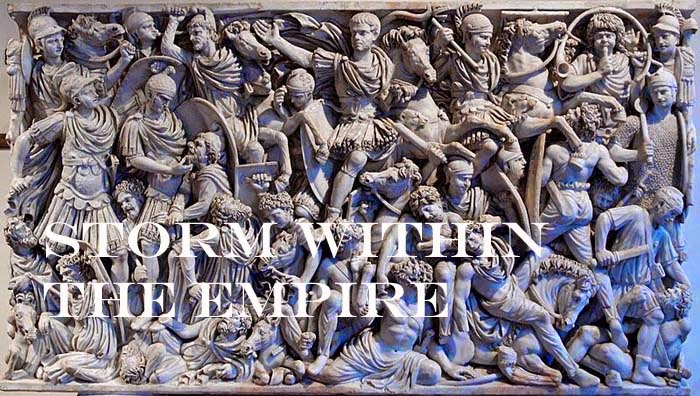After the disaster at Carrhae in 53 BC, conflict between Rome and Parthia remained relatively quiet, with each becoming involved in dynastic upheavals along their adjoining frontier. The major campaigns of the second century, that of Trajan in 115 – 117 AD and the war of 161 – 166 AD would see the capture and sack of the Parthian capital of Ctesiphon plus the annexation of territories in Mesopotamia. Rome’s final campaign of 216 – 217 AD proved unsuccessful, but would see the downfall of the Parthian Empire eight years later.
Game one
Preparing to meet the Parthian, Rome deployed in its standard formation of the legion in centre, auxilia on both flanks with the cavalry in forming a second line. Rome’s left, protected by woods, would be the target of Parthia’s attack to be carried out by the cataphract. Horse archers would probe for openings on the enemy flank and rear..
Confident
that artillery and archery would suffice to protect its left, the legion moved forward,
closing close the space and denying the Parthian any maneuver room.
The
cataphract rode down the artillery and its supporting auxilia and rather than
setting the Romans to panic, soon found themselves surrounded by cavalry and
legionnaires, ending the Parthian attack. Rome 5 – 2.
Game two
Rome
deployed and awaited the enemy and soon noted the Parthian would set its main
assault against the open flank.
Scrambling
to reposition troops, Rome took advantage of the indecision by the Parthian to
increase its pace (both sides had low pip scores for two turns).
The
situation on the Roman right became desperate as horse archers pinned Roman right
wing leaving Roman troops in the centre to face the onslaught by the Parthian cataphract.
Along the
Roman front, breaches were to be seen as Roman troops succumbed to the Parthian
assault. Realising the situation could not be retrieved, the Roman general signalled
a retreat. Parthia 4 – 1.
Observations
In game two,
Rome confident of repeating a second success, positioned its troops as before. That
confidence was swept away as it scrambled to defend its right flank. Sending
troops from one flank to the opposite flank is not the best way to expend pips.
Early
Imperial Roman
1 x General
(Cv), 1 x equites (Cv), 4 x legionnaires (4Bd), 3 x auxilia infantry (4Ax), 1 x
archers (4Bw or Ps), 1 x light horse (LH), 1 x artillery (Art).
Parthia
1 x General
(4Kn), 2 x cataphract (4Kn), 9 x horse archers (LH).





































